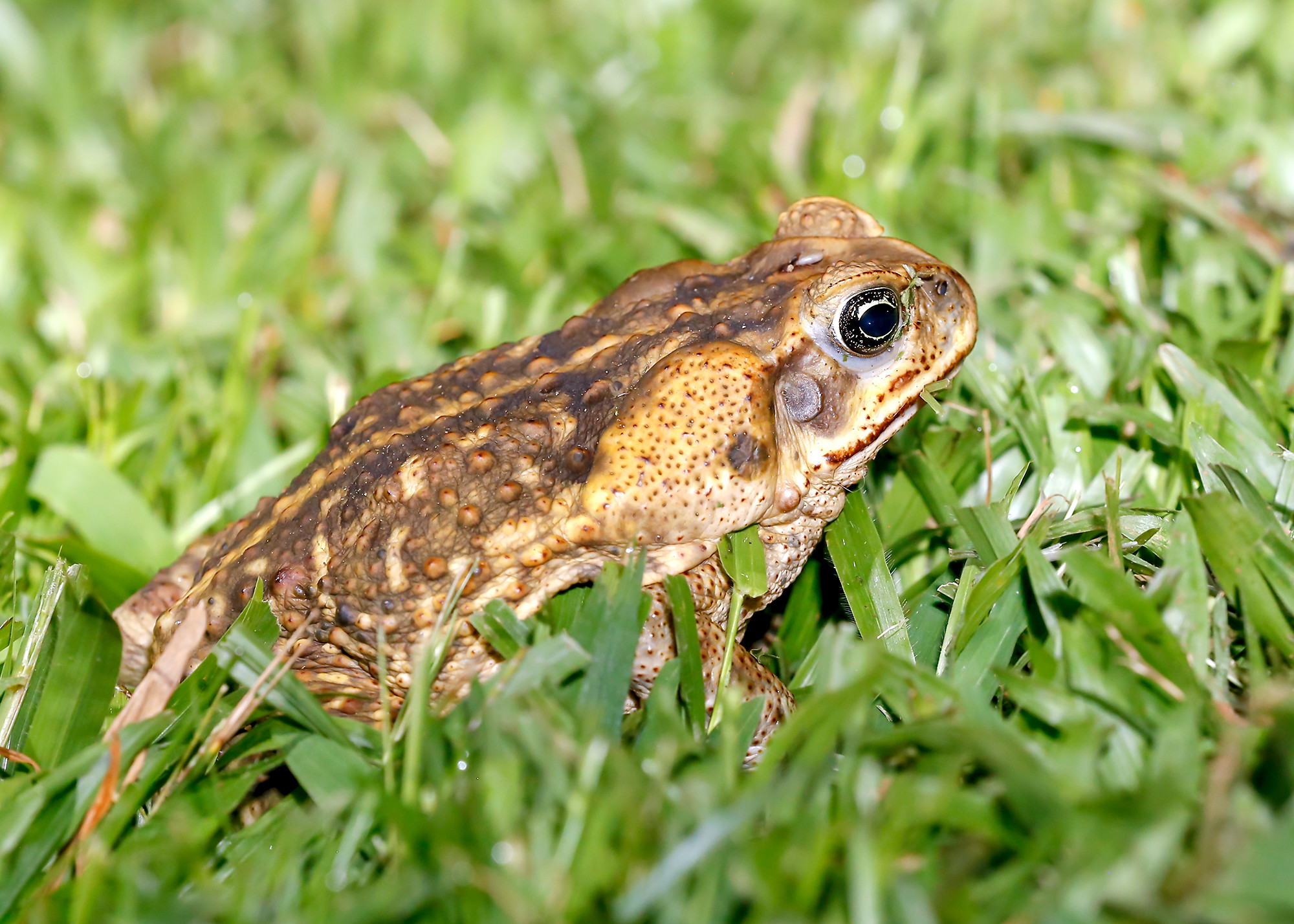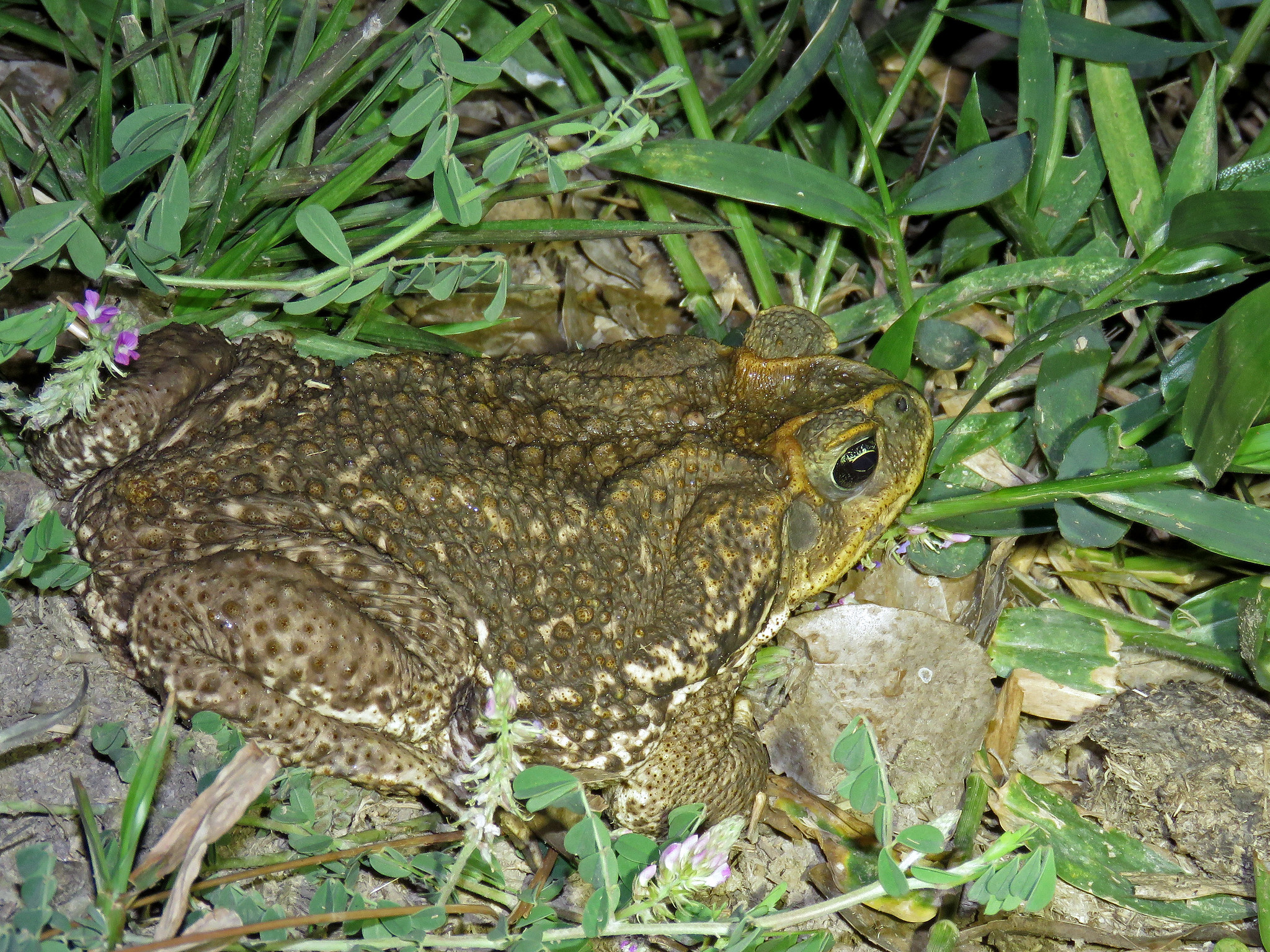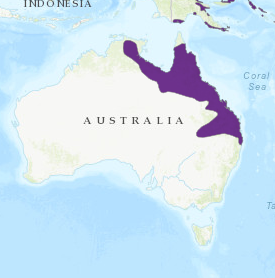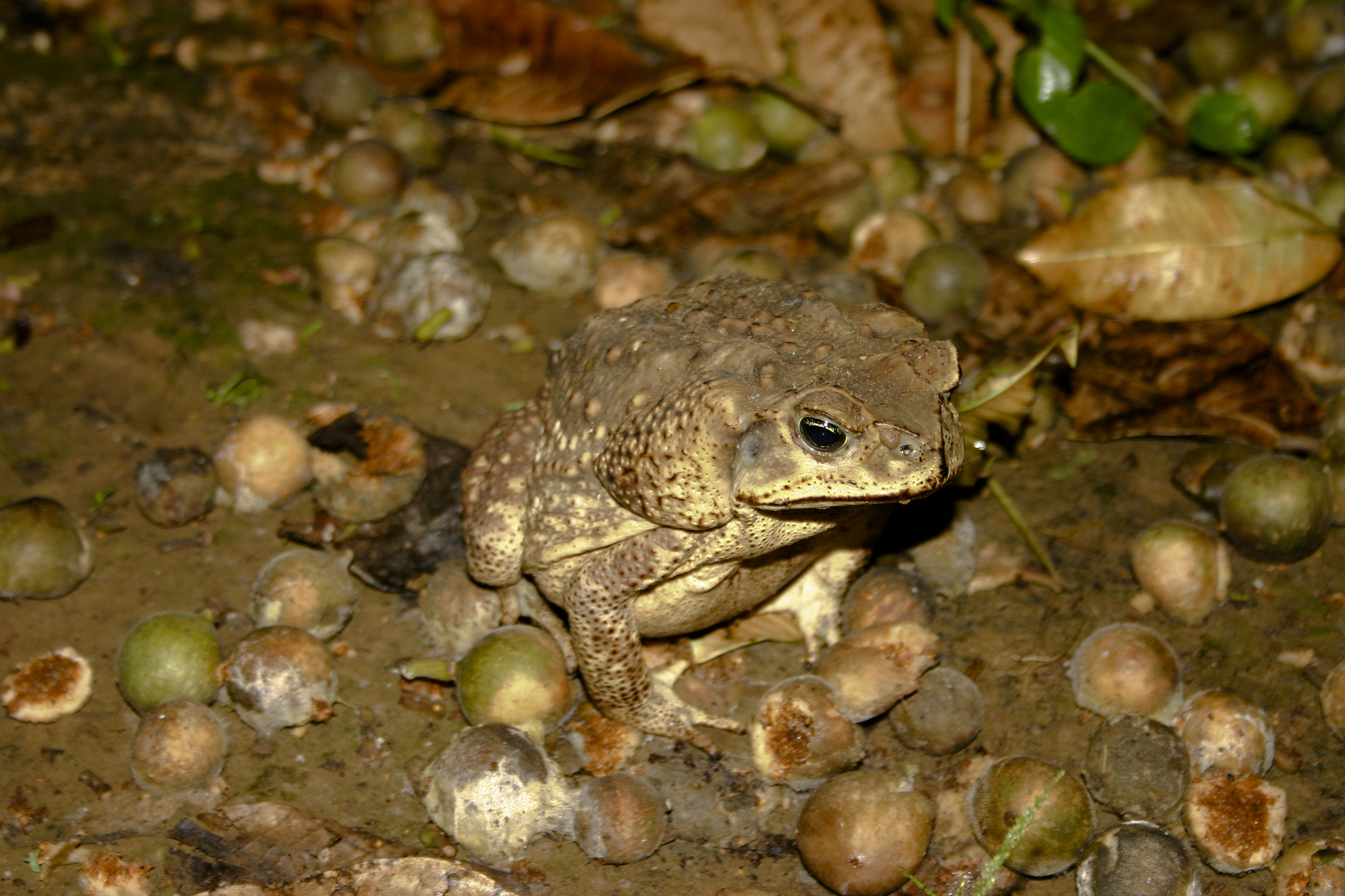Cane toads have tough, leathery skin with a distinctive warty appearance. Usually grey, brown, reddish-brown or yellow in colour with a pale underbelly. Pronounced bony ridge above nostril and venom-producing gland behind the ear (behind the eye).
Juveniles have smooth dark skin with darker blotches and bars. Cane toads sit upright and move in short rapid hops that can help distinguish them from other species. Average-sized adults are 10-15 cm long.
Cane Toad tadpoles are shiny black on top and have a plain dark belly with a short thin tail. They are smaller (less than 3.5 cm) and often gather in huge numbers in shallow waters.
Cane Toad eggs are laid in long strings of transparent jelly enclosing double trows of black eggs. The spawn tangles in dense masses around water plants.
Behaviour
Adults are most active during the night (nocturnal) during the warm months of the year. During the day, or in cold and dry weather they take shelter in moist crevices and hollows. Juveniles are often active during the day and can be seen in dense clusters.
Males call with a continuous warble, not unlike the sound of a small petrol engine running. Calling peaks in January and finishes by March. Males have a very distinctive call likened to a motor running or ‘brrrrr’ sounds.
Females may lay 8,000 – 35,000 eggs at a time, and produce two clutches per year.
Field Guide
Improve your identification skills. Download your Cane Toad field guide here!






